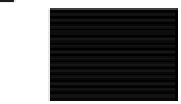Cryptography Reference
In-Depth Information
D
2í
θ
2í
2
θ
1í
D
1í
PBS-2
1
2
UV
BBO
UV
2
optical
trombone
PBS-1
Parametric down-
conversion crystal
Shih-Sergienko
Compensation
Figure 6.5
Experimental apparatus used to perform a demonstration of a quantum
parity check and a destructive CNOT logic gate.
6.4 Single-Photon Source and Memory
The linear optical techniques described above are a promising method for
implementing the quantum logic operations that would be required for a
quantum repeater. But a source of single photons and a quantum memory
would also be required for quantum repeater applications. In this section, we
describe prototype experiments in which both of these devices were demon-
strated.
In many respects, parametric down-conversion is an ideal way to generate
single photons [9]. As illustrated in Figure 6.11, a pulsed laser beam incident
on a nonlinear crystal will produce pairs of photons. If one member of a pair
is detected, that signals the presence of the other member of the pair. A high-
speed optical switch was then used to store the remaining photon in an optical
storage loop until it was needed, at which time it could be switched back out
of the storage loop. Although a source of this kind cannot produce photons
on demand at arbitrary times, it can produce photons at specific times that
can be synchronized with the clock time of a quantum computer, which is all
that is required for practical applications.
Some experimental results [9] from a single-photon source of this kind
are shown in Figure 6.12. It can be seen that the source is capable of producing
and storing single photons for later use, but there was a loss of roughly 20%













































